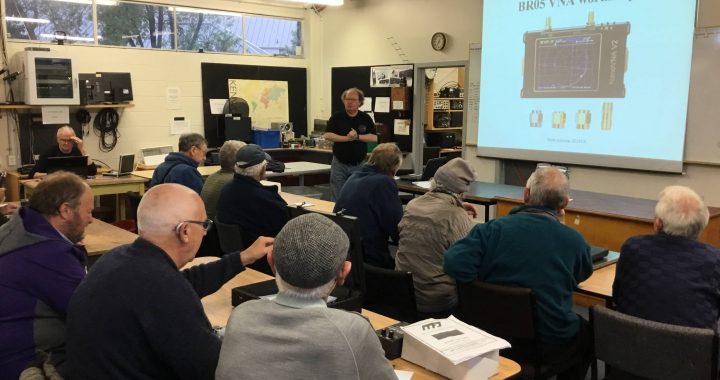The evening started out with a PowerPoint presentation by Mark (ZL3JVX).
Those present then broke into three smaller groups, led by Alan (ZL3UYJ) /Blair (ZL3TOY) in the main hall with a 6 metre Yagi, Richard (ZL4FZ) in the workshop, and Kelvin (ZL3KB) in the Radio Shack. The audience could rotate at intervals so as to see all 3 aspects displayed and explained. So what actually IS a Vector Network Analyzer” (VNA)? According to Mark, it could be thought of as a “thinking man’s VSWR (Voltage Standing Wave Ratio) meter”.
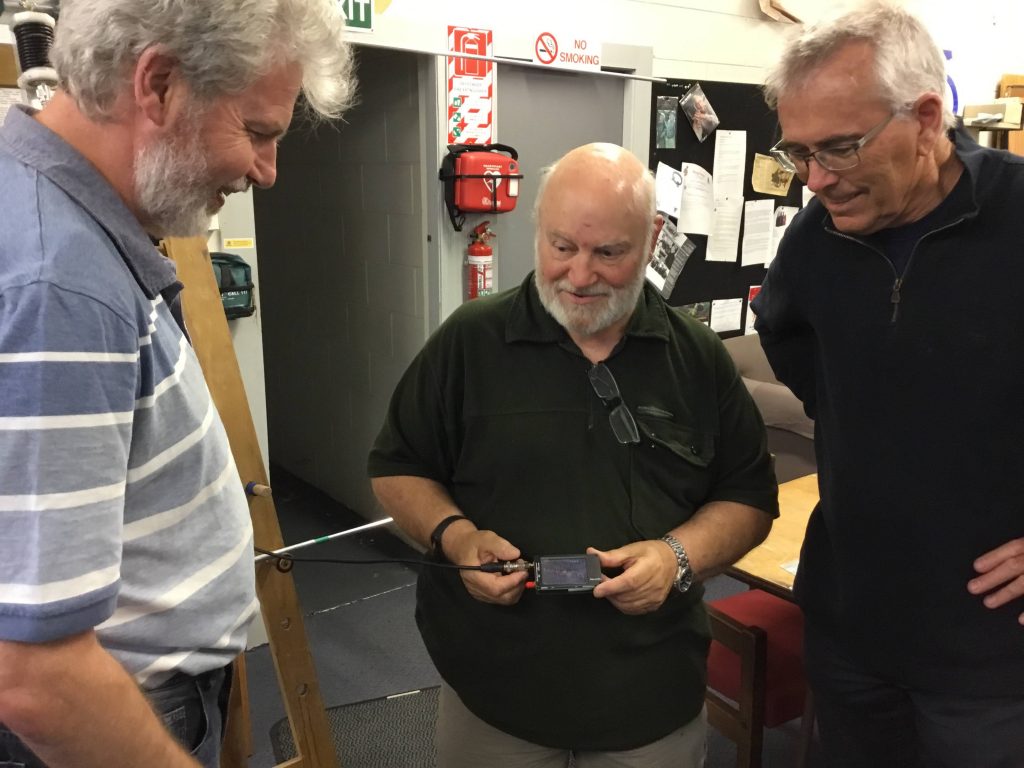
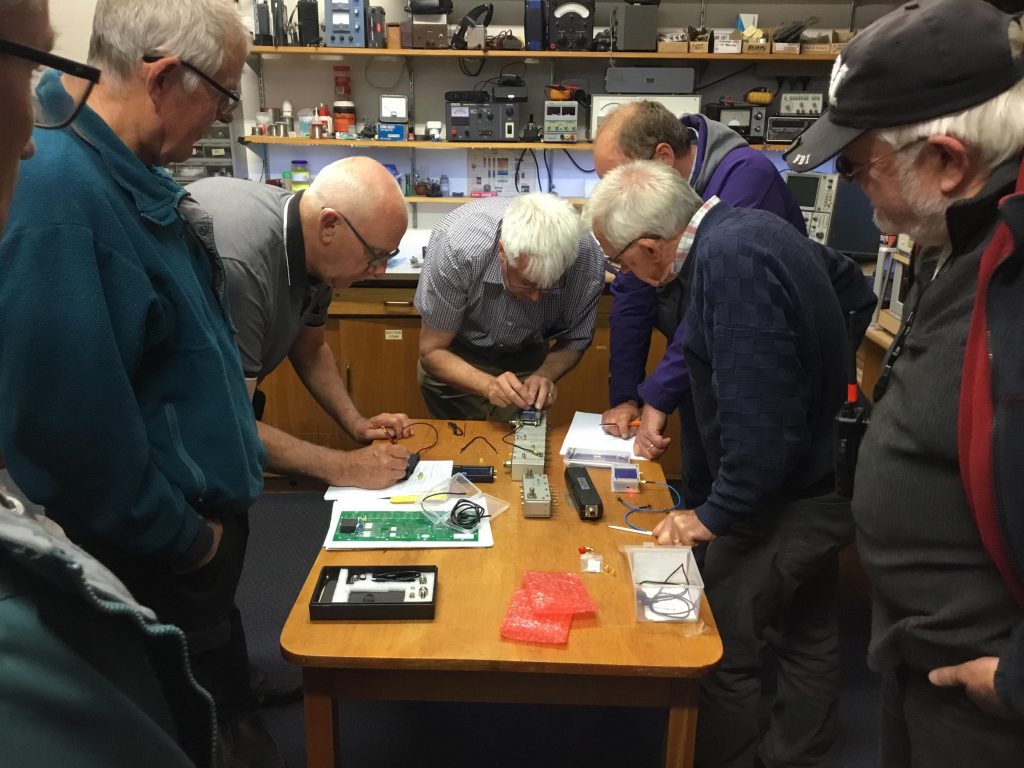
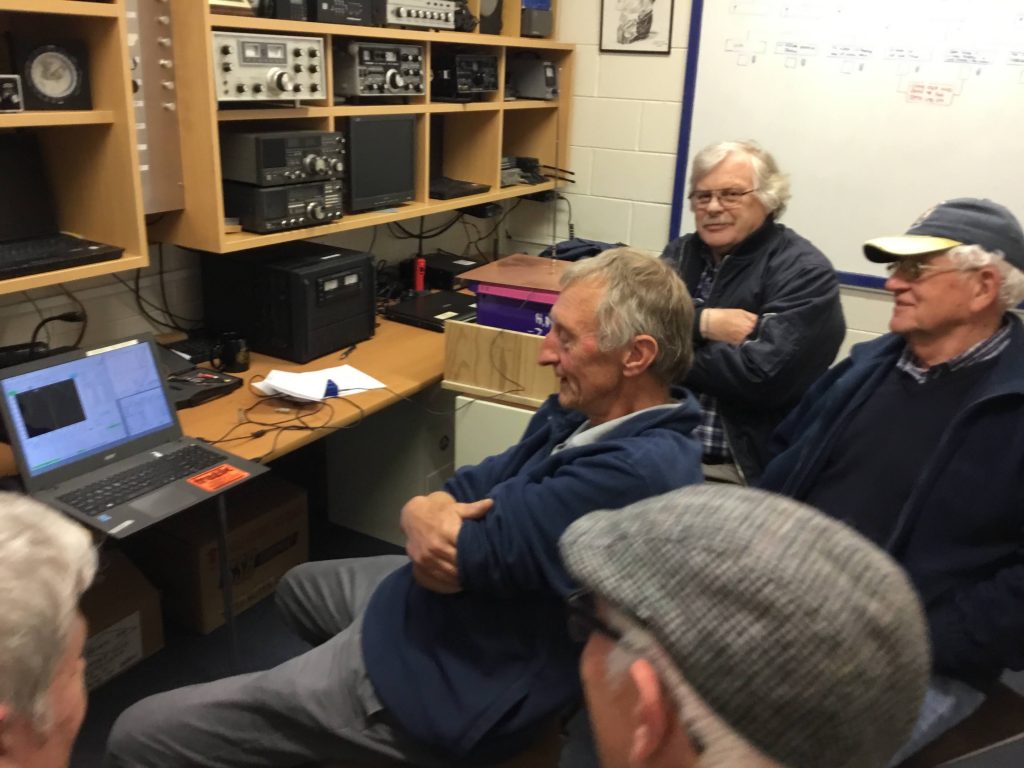
But apparently it’s also an Antenna Impedance Measurement Tool, a Filter Characteristic Analyzer, and an S-Parameter Measurement Tool. It seems that some years back, they started off priced around $50,000. Later kitsets became available somewhat cheaper and later still the benefits of Chinese copying and cheap bulk manufacturing came into play. Several small models are now available, with some as low as about $100 for the new “Nano” type units.
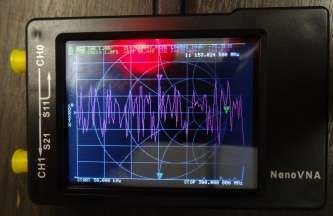
It turns out that Calibration is essential for these units. Some are a bit easier to calibrate and use than others. Usually it’s best to allow the units 20 to 30 minutes of warm-up time beforehand. The bulk of the measurements done for the evening were limited to Scalar Reflection making the devices useful for Antenna testing.
By replacing a VSWR meter with a Low Power Impedance Bridge, exceptionally low power levels can be used. This gives the possibility for extending the range tested to that above and below the approved Amateur Frequencies (don’t panic though, the signal strength used ain’t powerful enough to be goin’ any-wheres ! ) When considering the differences between VSWR and Return Loss, VSWR is great at measuring Poor Matches whereas Return Loss is most useful for measuring Good Matches.
I remember Alan (ZL3UYJ) saying “it needs to look at the phase of the return signal”. (Not completely sure what that means, but, yeah, ok, sounds about right). When referring to the vital aspect that freshly Calibrating the Nano VNA is about, Richard said it “needs to know what an open (circuit), a short (circuit) and a Good 50 Ohm looks like”. In conclusion, my understanding is that a VNA, sends a tiny microscopic amount of power up through an antenna. In one fell swoop it gives back a readout on a laptop which can tell what that antenna’s best possible VSWR would be, and at what frequency. This allows adjustments to be made to the antenna and the test results checked again.
These sound like a great wee tool and very useful, however for me, I’m still learning how to use the advanced controls on a VSWR meter.
Author Catherine ZL3CATH, photo’s supplied by Ian ZL3TAO and others.
